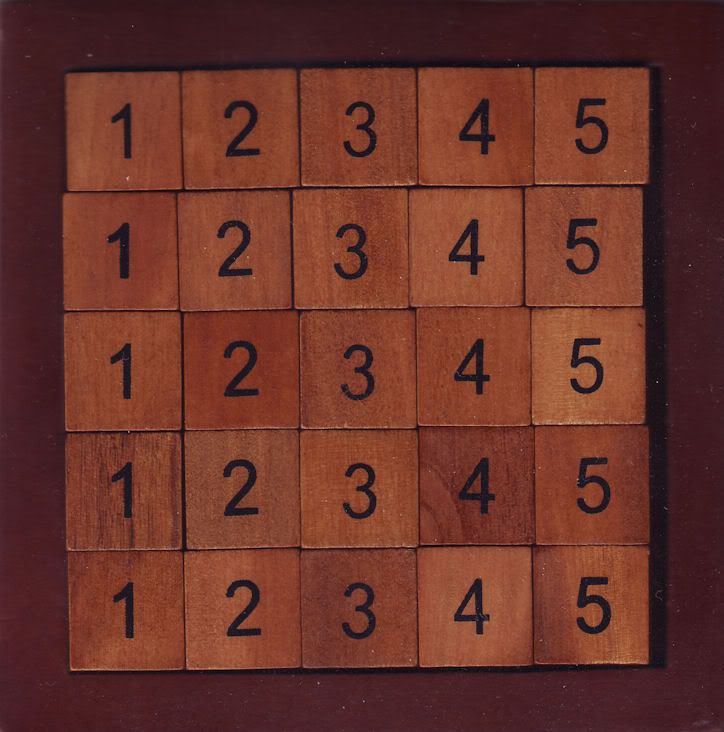In my Christmas stocking, Santa left me this wooden puzzle:

The instructions are:
Can you make every row add up to 15?
Every horizontal and vertical row, and the
two corner to corner diagonal rows must
equal 15.
After some noodling and re-arranging of the 25 tiles, I found a couple of solutions, neither the same as the one solution given in the box.
So I wrote a noddy program to try and find additional solutions, and more were revealed.
Upon reflection, I feel there may be even more solutions
The challenge for the programmers and mathematicians among you then is this:
Can you solve it?
More importantly, how many solutions can you find?
I look forward to seeing your answers and comparing them with my own.

The instructions are:
Can you make every row add up to 15?
Every horizontal and vertical row, and the
two corner to corner diagonal rows must
equal 15.
After some noodling and re-arranging of the 25 tiles, I found a couple of solutions, neither the same as the one solution given in the box.
So I wrote a noddy program to try and find additional solutions, and more were revealed.
Upon reflection, I feel there may be even more solutions

The challenge for the programmers and mathematicians among you then is this:
Can you solve it?
More importantly, how many solutions can you find?
I look forward to seeing your answers and comparing them with my own.







Comment